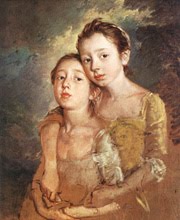Below is a list of the hot artists of the era that coincided with the aforementioned artists up until 1960, when I believe the last prize was awarded. It is a list of the disappeared.
- 1861 – Léon Perrault
- 1865 – André Hennebicq
- 1868 – Édouard-Théophile Blanchard[2]
- 1880 – Henri Lucien Doucet
- 1884 – Edouard Cabane – “Second Prize”
- 1891 – Hubert-Denis Etcheverry – “Second Prize”
- 1906 – Albert Henry Krehbiel
- 1910 – Jean Dupas
- 1924 – René-Marie Castaing
- 1925 – Odette Pauvert – First “First Grand Prize” obtained by a woman
- 1930 – Salvatore DeMaio
- 1948 – John Heliker
- 1950 – Paul Collomb – “First Grand Prize” and “Second Prize”
- 1960 – Pierre Carron
Personally, I have never won an art prize, not a single one that I can remember offhand. Oh yes, sorry, I won a Sagendorf prize (Copley Society) for a portrait about 20 years ago. Again in the second grade I won 10 dollars for a patriotic essay for the Daughters of the American Revolution, something I would be hard put to write today. Since then it has been mostly downhill. I have been refused entry into art shows in my home state of Rhode Island, even one recent exhibition for women- ouch! I have entered enough contests whose fees undoubtedly would aid the national debt if not mine. I could paper the walls of a large house with the letters of regret. I doubt I have even gotten an honorable mention- I may have gotten a few finalist accolades. I am like most artists, depending on what the future, fashion or taste holds, either lucky or unlucky.
And I am neither fashionable nor unfashionable- I do not rise to the collective art consciousness. I am obscure.
But for those of you who are hovering with me over the abyss of anonymity I give you the tale of the not so immortal Georges Rochegrosse.
 |
| Dancer Undressing $3,485.16 |
From First Dibs
"Georges Rochegrosse was abandoned by his father as a child, and when his mother remarried he became the stepson of the great poet Théodore de Banville. In this new intellectual, artistic family environment he began receiving guidance from Alfred Dehodencq. Then, at the age of 12, he became a pupil of Gustave Boulanger and Jules Lefebvre at the Académie Julian, where he later taught draughtsmanship. While enjoying the benefits of the more liberal teaching at the Académie Julian, he enrolled at the École des Beaux-Arts, and was a finalist in the Prix de Rome competition twice. In 1883 he won the Prix du Salon, which enabled him to visit Italy. He subsequently traveled to Belgium, Holland and Germany. Around 1890 he married his great love Marie Leblond, who became the model for the heroines in his paintings for about 30 years. From 1900, Rochegrosse and Marie spent the winter months in El-Biar, in the hills above the Bay of Algiers, where the painter often found the Oriental backgrounds for his compositions. In 1920 Marie died and Rochegrosse sought solace at the Société Théosophique de France (French Theosophical Society). In 1937, a year before he died, he married Antoinette Arnau. He died in El-Biar, but he was buried in Montparnasse Cemetery in Paris. Having grown up in the shadow of a literary colossus, Rochegrosse adventurously followed in the footsteps of Delacroix: in his first period he took his subjects from the Egyptian, Roman and Byzantine civilisations, for which Banville helped him to reconstitute the authentic details. The end of this period was marked by the huge success of his Death of Babylon at the Salon. Banville died in 1891. Now almost totally forgotten, in the 1880s and 1900s Rochegrosse was a fashionable painter. His fame was international, commensurate with the ambitious nature of his major historical, mythological and literary compositions. In Sherlock Holmes, Conan Doyle praises one of his paintings. Nowadays there is more reticence about the artificial theatricality of his great, but merely narrative, 'machines', in which gesture often takes the place of true emotion. Nevertheless, when a retrospective based around this period throws up one of his compositions, his skilful draughtsmanship, pictorial technique and the positioning of his figures are striking, as is the painstaking detail of the action and the backdrops in his complex heroic scenarios. In 2003 his work appeared in the collective exhibition The School of Algiers (L'École d'Alger) at the Musée des Beaux-Arts in Bordeaux."
If you go through a list of the Grand Prix winners of the French Salon onWikipedia, it is surprising how very few are known today. Manet never won a prize, was refused many times, but his model for Olympia, Victorine Meurent) did get in. She also thought little of his paintings.











No comments:
Post a Comment